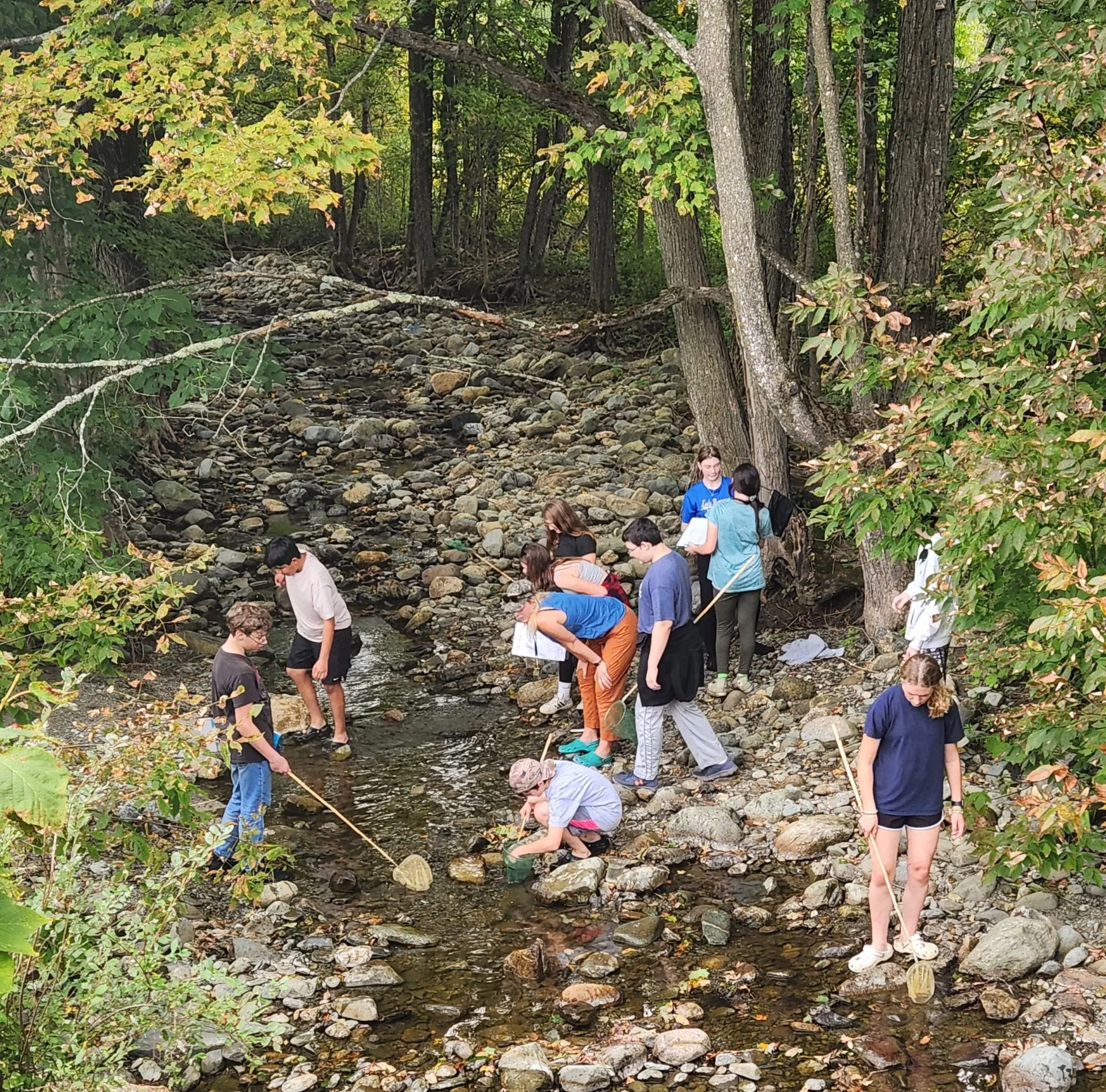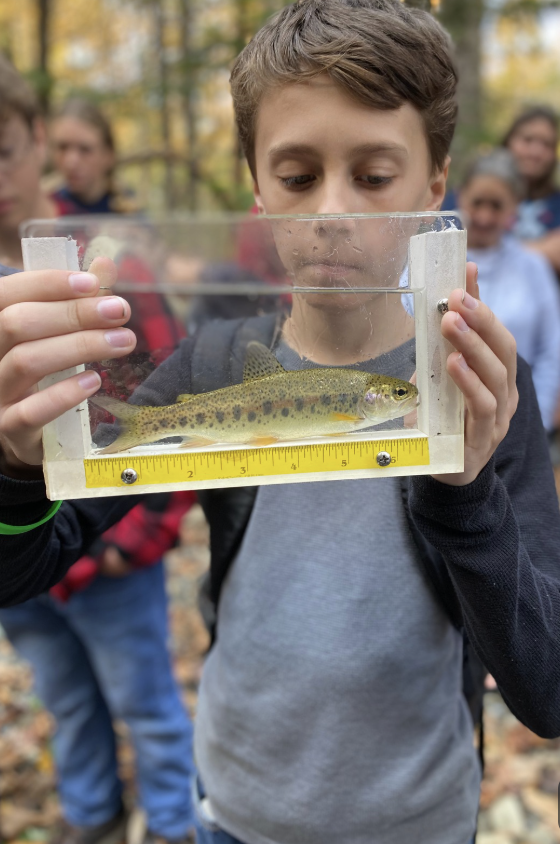Habitat Studies Engage Students at the Albany Community School
By Rachel Deonigi & Laurie Anne Kozar
Helping rural students to feel engaged in learning can be easy when connected to what often seems commonplace: the very features that exist right in their own backyard! Exploring habitats can open the doorway to discovery for many students, provide real world lessons, as well as opportunities to engage with partners in learning from outside of the school. At the Albany Community School a River Study of Mcclure Creek - a tributary of the Passumpsic River and part of the watershed of the Connecticut River - kicked-off student’s placed based learning.
Students examined two different habitats on their school campus: a wetland area with lots of beaver activity that had created a slow moving pool of water, and a faster moving brook lined with trees that provided a full canopy shading the rocky streambed. Students started by studying the macroinvertebrates that reside in these habitats, and explored how each creature could be used as an indicator of water quality and overall health of the watery ecosystem. Classes conducted several macroinvertebrate inventories and the collections in both locations allowed students to compare the differences in biota and evaluate the water quality and see if it varied in either location.
We were excited to find a beautiful Brook Trout living in the shady, stone-bottomed creek, as well as several crayfish that the students bravely caught to get a closer look. Additionally, classes performed stream corridor surveys to analyze the health of the riparian buffer alongside the creek, and tested the water for levels of turbidity, acidity, dissolved oxygen, and phosphorus.
“I think the river ecology unit was fun because we got to actually go to the river and even sometimes go in the river. It made me think differently about the creek on our campus– I just thought it was a creek before, but now that I know it’s actually a healthy creek it’s different.”
Despite the wetland area of the creek appearing to be “dirty” due to higher turbidity levels and more stagnant water, both areas of the creek were evaluated to be healthy based on the Vermont Department of Environmental Water Quality Standards, which was surprising to some students. The only component students discovered that was not within a healthy range was the phosphorus levels. Students learned that phosphorus often enters Vermont's tributaries through various sources, including agricultural runoff (fertilizers, animal waste), urban runoff, and streambank erosion (according to the Lake Champlain Basin Program and the University of Vermont). We noticed that manure had been spread on the pasture that McCleary Creek runs alongside. Students were curious to study the phosphorus over time, and we plan to collect data in the spring and fall to compare levels in the creek pre and post field manure spreading activities.
Levi Brown of Vermont Fish and Wildlife joined our classes and supported the students in their environmental science studies. Levi performed an electrofishing demonstration with students at two very different fish habitats near our campus. The first was a shaded brook running over bedrock off Town Line Road in Craftsbury, and the second was a series of sun-drenched pools near Irasburg Common, with creek water that had been flowing through miles of agricultural fields prior to reaching us at the pools. Students were able to view the fish up close in plexiglass viewing containers and witnessed the variety in species depending on water conditions, habitat, and what was upstream.
“I liked it because it was more hands-on you know? We had to do the presentation part so I had to think about it–it really helped us develop presentation skills.”
Students combined their data into a presentation sharing the data of the water quality, stream corridor, and macroinvertebrate diversity to argue if the McCleary Creek was a healthy ecosystem. Students then presented their findings to the elementary grades in our buildings and staff. All grades utilize the campus creek in their own way, beginning with structured play alongside the banks for the younger grades, evolving into erosion studies as they reach upper elementary, and the more in-depth river ecology studies of middle school. As older students practice presentation skills, and present on the health of the creek to the younger grades, the influence can be tangible. As each class rises through the school all students are able to enjoy and be inspired by learning utilizing the creek as a living laboratory as well as a beautiful space to enjoy their childhood.
“I liked being outside and checking out the creek with my friends. I didn’t know bugs and fish could tell you if the water’s healthy or not. It made learning more interesting!”
Our data collection plans continue to evolve as each investigation spurs new ideas and questions. We plan to have Levi Brown visit our campus to electrofish the two sites of McCleary Creek that we had been comparing, as well as following up with more Phosphorus testing and creating a plan to restore the riparian buffer alongside the creek to help mitigate the manure runoff. We will also be participating in Trout in the Classroom to help maintain interest in river ecology through the frozen winter months.




